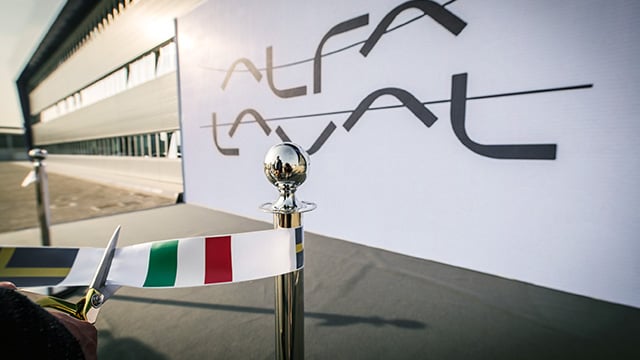2025-08-07 by Neil Parry, Global Head of District Energy
Why Heat Network Zoning Rollout Must Embrace the Bigger Picture
The UK’s rollout of heat network zoning, led by the Department for Energy Security and Net Zero (DESNZ), marks a significant milestone in the country’s journey toward decarbonising its built environment.
With 28 pilot zones identified and £5.8 million in funding allocated to six key areas – Bristol, Leeds, Plymouth, Sheffield, Stockport and two London sites – the initiative is laying the groundwork for a new era of low-carbon heating infrastructure.
Yet, while the zoning programme is a welcome development, its current scope is limited to district
heating. A broader, more integrated approach that embraces the full potential of district energy is required, combining heating, cooling, and waste heat recovery into a unified system. By doing so, such a model could offer a more resilient and efficient infrastructure solution futureproofed against increasingly extreme weather.

The Missing Role of Cooling
As the UK experiences rising temperatures due to climate change, the demand for cooling is growing rapidly. Indeed, amid the heatwaves that have dominated the summer, the Met Office has noted that the UK is now experiencing a ‘notably different’ climate to only a few decades ago and that record-breaking heat should now be regarded as the new normal.
This follows on from other eye-catching predictions that UK summers will be six degrees celsius warmer on average in 2070, when compared to 1990 levels. With these findings and predictions in mind, it is clear cooling will increasingly become a critical infrastructure and public health concern. In fact, it can be argued that it should be already.
Yet despite this, district cooling remains absent from the current zoning framework and is curiously overlooked in discussions around how to cope with the UK’s rising temperatures. This omission risks the underuse of existing infrastructure, and by association, opportunities for more efficient energy use.
Indeed, integrated heating and cooling networks enable year-round use of district energy within thermal infrastructure, allowing waste heat from sources such as data centres, industrial processes, and public transport systems to be captured and reused rather than discarded. Importantly, the heat in the network can also be used to produce cooling via technologies such as absorption heat pumps, allowing the energy in both the heating and cooling networks to balance themselves, based upon the connected buildings’ demand.
Unlocking the Value of Waste Heat
This is important considering that currently, two-thirds of the heat required to warm and cool UK buildings is wasted, and without wide-ranging action, this figure is expected to rise to 80% by 2050. District energy systems can provide a way to mitigate this waste, acting as thermal batteries that can cool or heat depending on what is required and when.
This capability is particularly valuable for facilitating the integration of renewable energy sources and large-scale thermal storage (both heat and cool). This storage and certain energy sources, such as biomass CHP, for example, can help balance the electricity grid. So, when electricity prices spike due to low renewable output – whether through cloudy, non-sunny days or low wind speeds – biomass combined heat and power (CHP) plants can generate both heat and electricity, and thermal energy utilised in Organic Rankine Cycle (ORC) plants can be used to create electricity stabilising the system while also opening up additional revenue streams.
This increases electric network resilience and helps to stabilise price levels, minimising some of the well-documented challenges of renewable electricity production and large-scale electrification.
Celebrating Swedish Success
To some, these innovations can seem far-off and utopian. Yet they are currently in use right now. The Swedish city of Lund, for instance, operates multiple generations of network pipelines integrating waste heat recovery. In practice, this system warms 85% of the city during the cold winters of Sweden’s north-east, while also sending energy to the heating and cooling network in nearby Helsingborg.
Solutions such as these demonstrate the viability of district energy as a scalable, efficient, and low-carbon solution to changing climates in Northern Europe and beyond. The Pan-European Thermal Atlas (PETA), for instance, highlights the UK’s potential as a district energy location, underlining that its population density and clustered areas of heat demand are well-suited to infrastructure now seen in the Nordic nations. But this is only potential – what is now required is the policy framework to enable it.
Zoning as a Launchpad
Taking this into account, the introduction of heat network zoning by DESNZ is a welcome move, as it provides a mechanism to scale up smaller systems to city-wide infrastructure. It mandates connection to heat networks in designated areas, particularly for new buildings, and encourages existing stock to follow suit.
Yet while this is undoubtedly a positive step, there is clearly more to do. Limiting the rollout to heating alone risks creating building infrastructure that will need to be retrofitted within the not too distant future, in logistically complex projects likely to take place at great expense. Zoning policy must therefore evolve to include cooling and waste heat integration, thereby avoiding this issue.
Raising Standards and Closing the Knowledge Gap
Another challenge facing heat networks in the UK is a legacy of poor implementation. A 2023 report by Utility Week underlines this phenomenon, finding that a third of UK schemes are set to be scrapped ahead of the introduction of new technical standards.
In response to this challenge, Alfa Laval is currently offering free, CIBSE-accredited district energy CPDs. With a selection to choose from, these courses cover everything from the fundamentals of district energy, how to increase its efficiency and optimise the system, its importance in creating the sustainable city, to heat transfer theory and the critical role of heat exchangers in creating an energy-efficient system.
Building for the Future
In conclusion, the rollout of heat network zoning across the UK is a promising start, but it must be part of a broader district energy strategy. By integrating heating and cooling and capturing waste heat, the UK can build an energy system that is not only low-carbon, but also flexible, efficient, and resilient against increasingly extreme weather.
District energy is uniquely positioned to deliver on these goals. But to realise its full potential, policymakers, engineers, and industry leaders must embrace a more expansive vision that looks beyond the pipes and toward a truly sustainable future.
For more information on district energy, sign up for a CIBSE-accredited CPD from Alfa Laval.






